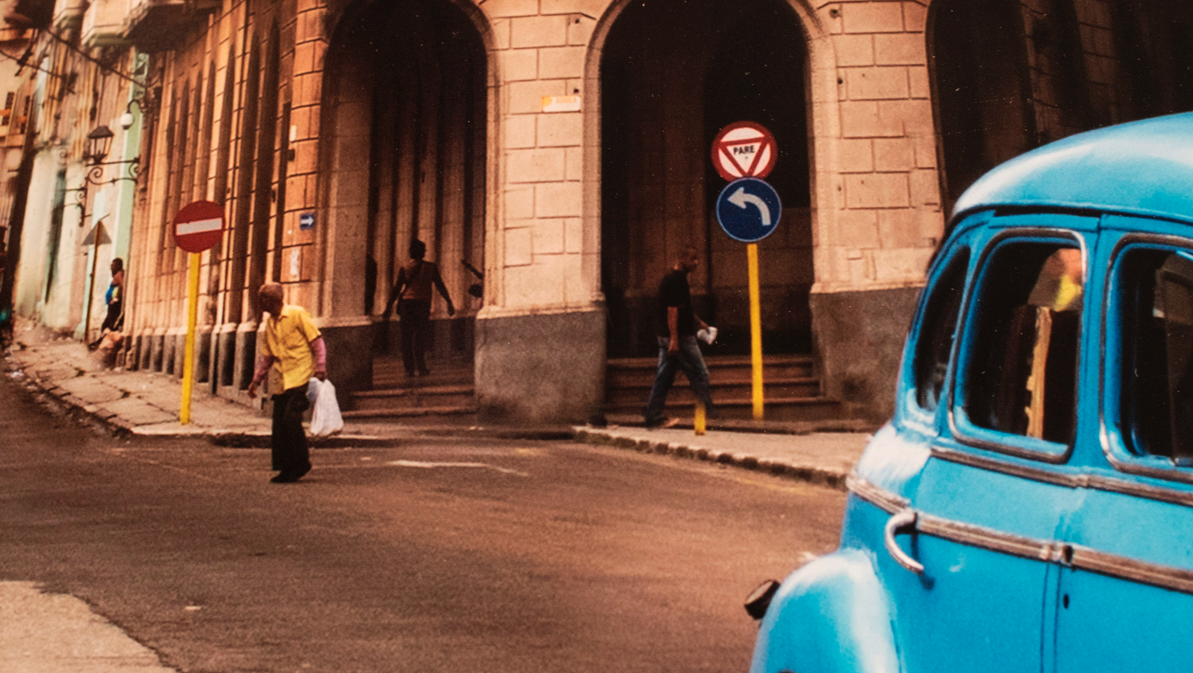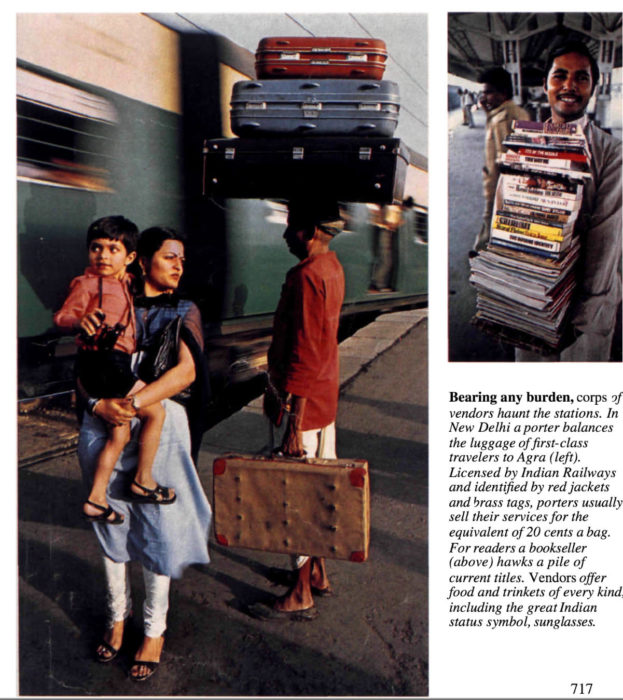People began to look more closely at Steve McCurry work and a number of more serious and urgent questions were raised which in the end became a full blown scandal revealing methods used by McCurry in constructing his iconic images that goes against standards and ethics in documentary photography and photojournalism. This led to Steve McCurry, losing his good reputation of being a well established photographer, which led to his career in photography coming to an end. One of the publics major problems with Steve McCurry was his use of Photoshop to manipulate photos. An example of this was the botched print photographers had seen at a show in Italy, it was first spotted by Paolo Vigione and he posted about it on his own blog.

He has noticed the manipulation, which had taken place in the photograph, which had left the bottom bit of the yellow pole where the man’s foot and leg should have been. It was clear he has moved the man back and reconstructed the pole, however hadn’t returned to the person after to eliminate any smudges, which in this case was the pole that comes out of his leg and perhaps reconstructed what was missing, such as his foot. Viglione says he ” Had no intention to attack McCurry, he simply wanted to show something ‘Strange’, even a little “fun” that he had seen. He even removed the post after it took off, but the public had already formed an opinion.
The original photograph was also removed from Steve’s website , people and publications across the Web quickly began digging to see what other McCurry images they could find that had been seriously altered. They did not seem to come up empty handed.
Steve McCurry is known for staging his shoots by arranging models and props, creating a scene that fits in with a certain construction and representation of a certain stereotype and exotic version of India.
When Talking about Steve's work Satish Sharma Says: " I am not at all surprised at the digital manipulation (done by him) to create the perfect frame." "I have watched him rig (stage) his pictures. (He) Arranged the subjects (back then) because chromes (slide film) could not be that easily manipulated."
When technology makes it so easy to manipulate images, how much manipulation is acceptable?
There has always been a conflicting discussion/debate in the world of photography, photo manipulation is becoming increasing more popular than before, which is the altering of a photograph using varies methods and techniques to achieve desired results. This could be by simply enhancing the image by adapting the light and colour of the photograph. However, it can also be manipulated by adding or removing objects from the photograph. I feel like this is okay for photographers to adapt their images in any way they want as long as they are not hiding the truth and the real purpose or story. This all depends what the photograph is of, this is because some photo manipulations are considered as forms of artwork while others are frowned upon as unethical, especially if the photograph is used to deceive the public, such as the use of photography for propaganda or to make a place, person or object look better than it is. This is used a lot in fashion photography and the model and celebrity world as their photos are consistently being manipulated to make them look thinner, more tanned, to remove wrinkles etc. I feel this type of manipulation is wrong. If you are adding or changing something, which was not present in the original scene you are then crossing the line from documentary art form into a fictional photograph, if this is used to tell a fictional story and is not claiming to be a true representation then I personally feel this is acceptable. The problem with Steve Mcurry was that he claimed his photographs were true representations of the places he was capturing as he was a documentary photographer. However, his photographs were heavily manipulated, which goes against what documentary photography is about. I think the line between documentary photography and photojournalism is often blurred, Steve McCurry was often considered a photojournalist as his work was featured in non-fiction publications. I believe this is why there was so much controversy when his unedited photos were presented to the public online. In an interview with Time, McCurry claimed that he is a “visual story teller, not a photojournalist” which would make sense if what he is doing is making beautiful images that tell a story of foreign lands rather than accurately documenting life in other countries, which is what he previously stated to do. In a Ted Talks interview, McCurry talks in detail about the context and rawness of each photo and claims to document things as they are. A direct quote being ” I believe that the picture should reflect exactly what you saw and experienced when you took the picture.” It is hard to form a for or against opinion on McCurry’s work and the man as a photographer, despite his seemingly contradicting public statements; because there is no right or wrong way to be a photojournalist or a photographic story teller and there is no one who decides who is and who isn’t either of these things.
With viewers more sophisticated and skeptical than ever before, how can photojournalists and documentary photographers preserve their integrity and maintain trust?
1. Should be aware of the influence their presence can exert on a scene they photograph, and should resist being misled by staged photo opportunities
2. Must not intentionally contribute to, or alter, the scene they picture by re-enacting or staging events.
3. Must maintain the integrity of the picture by ensuring there are no material changes to content
4. Must ensure captions are accurate
5. Must ensure the editing of a picture story provides an accurate and fair representation of its context.
6. Must be open and transparent about the entire process through which their pictures are made, and be accountable to the World Press Photo Foundation for their practice.
If these rules are broken for a reason, the photographer should maybe post to original photograph on the photographers website as well as the manipulated one, explaining their purpose of the photoshoot and they they chose to manipulate it, writing honest articles as well as providing viewers with honest images.This would be to keep there reputation in tact, this is not an easy job, to find and provide evidence of story’s, as its much easier to lie here and there or to stretch the truth to make the article more interesting or more aesthetically pleasing, doing this could boost your popularity but as documentary photographer Steve Curry who is a well respected photographer praised for his amazing photos found to have staged and manipulated photos which led to all his photos being checked for their integrity and his trust lost. This led to his loss in his career as a world wide photographer. This was because he did not remain faithful to these “rules” by staging and heavily manipulating photographs to the point where he edits out figures and structures and this often results in creating a different and completely false scene. The captions to McCurry’s photographs are often misleading, For example the photograph of a “porter” at a train station is carrying empty suitcases although the caption leads the viewer to believe his a genuine porter carrying full suitcases. McCurry simply creates a situation that can be found elsewhere, so the scene is not completely fabricated but this is an exaggerated version of a real occurrence.

Who sets the boundaries of what defines photojournalism or documentary ethics?
I don’t think there is a definite factor which sets these boundaries nor do I think these boundaries remain the same. I would say society chooses what is acceptable and what isn’t through opinions and expectations. However, this opinion is subjective to change and debate, for example, Gay marriage was seen as wrong from the 1970’s- 1999 whereas now it is accepted in society, which is an example of how opinions and boundaries have changed. This is the same with boundaries in photography as they are ever changing. It is often very difficult to define photojournalism as well as the line between what is ethical and what is not. There is a whole spectrum of forms of photojournalism, varying from those seen in tabloids featuring exaggerated stories of celebrities to unprecedented. There are numerous people and organisations which define a form of standard for photographers and photojournalists to keep in mind when conducting photoshoots and writing articles. The world press Photo website gives a very straight forward guideline or ‘code of ethics’ on for their photography competition as listed above.
The world Press’ photograph contest is an annual competition started in 1955 which covers a number of categories which are to cover pressing issues from around the world such as ‘contemporary issues’, ‘people’, and ‘daily life’. The photographs are judged by a highly acclaimed team of photographers who look for compelling photographs featuring inspiring and influential stories. The code of ethics gives a good example of rules that a good photojournalist would follow and helps the photographers assess the work presented. These rules are in place to promote more authenticity that will also raise a positive awareness and influence into our society. The code of ethics cover a lot of different areas in which a photograph could deceive the viewer such as making sure captions are accurate., often captions of a photograph can change the entire context of a photograph. The codes focus on transparency from the photographer and their work, world Press Photo focuses on a non-bias freedom of speech as well as transparency from photographer to viewer.

